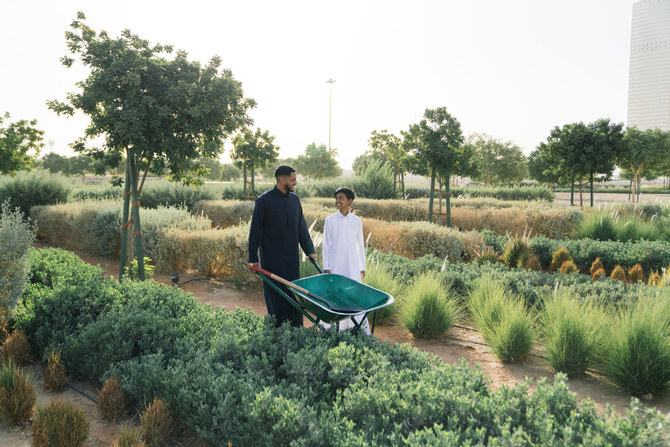
- ARAB NEWS
- 04 Jul 2025

Saudi Arabia’s remarkable strides toward preserving its ecosystems are testament to the Kingdom’s desire for environmental stewardship, as set out by Vision 2030, the Kingdom’s visionary road map to development and economic prosperity, which outlines a critical path toward environmental conservation and sustainability.
The foundations of Vision 2030 emphasize the preservation of the Kingdom’s biodiversity and natural heritage. It recognizes the importance of maintaining balanced and thriving ecosystems for the nation. The Kingdom’s projects, especially those that are part of the Saudi Green Initiative, are a pivotal means for maintaining a balanced ecosystem for future generations.
The Saudi Green Initiative was launched in 2021 to fulfill the Kingdom’s Vision 2030 environmental goals, with the aim of promoting sustainable practices and addressing critical environmental challenges. Environmental initiatives are the main drivers for conservation and sustainability efforts in the Kingdom. These include those led by the National Center for Wildlife, which focus on protecting terrestrial and marine wildlife by expanding protected areas with integrated and sustainable management and the conservation of coastal area environments, breeding and reintroducing endangered species, combating illegal hunting and overfishing, and playing a significant role in advocating for environmental awareness and sustainable practices.
Saudi Arabia’s efforts are an inspirational model for worldwide standards on sustainable development.
Kenana Dahlan
The Expansion of Protected Areas and Integrated Management Initiative aims to expand conservation efforts and improve the nation’s environmental and social economic impact. The Kingdom has made significant strides through this initiative, including adding Farasan Islands to the UNESCO World Network of Biosphere Reserves and making Uruq Bani Ma’arid Reserve the first natural site in Saudi Arabia to be added to UNESCO’s World Heritage List.
In addition, three natural areas are currently in the process of being expanded into protected areas. These are Jabal Radwa, with an area of 3,667 sq. km, Jabal Bathra, which spans 992 sq. km, and Ras Abu Hatibah, covering 5,715 sq. km. These efforts are within the umbrella of the Saudi Green Initiative’s “30 by 30” target, which aims to protect 30 percent of the Kingdom’s terrestrial and marine areas by 2030.
Despite these commendable efforts, Saudi Arabia is faced with the challenges of balancing conservation and development in line with Vision 2030. The importance of maintaining a balanced ecosystem in the Kingdom is integral for the well-being and sustainable development of the nation. To address these challenges, Saudi Arabia has implemented innovative approaches, such as the promotion of ecotourism and using technological advancements and international collaborations to maintain its preservation efforts for marine and terrestrial ecosystems.
Saudi Arabia’s efforts and impressive accomplishments toward protecting its ecosystems and sustaining its natural heritage are an inspirational model for worldwide standards on sustainable development. These efforts are a testimony to Vision 2030, providing a compelling narrative for the Kingdom of proactive environmental governance. By preserving its biodiversity, the Kingdom is investing in the development of its own future as well as the collective global well-being.
• Kenana Dahlan is head of Edelman Saudi Arabia, a global public relations consultancy, who previously held roles at the King Abdullah University of Science and Technology, NEOM, the Vision Realization Office, and the Ministry of Industry and Mineral Resources.